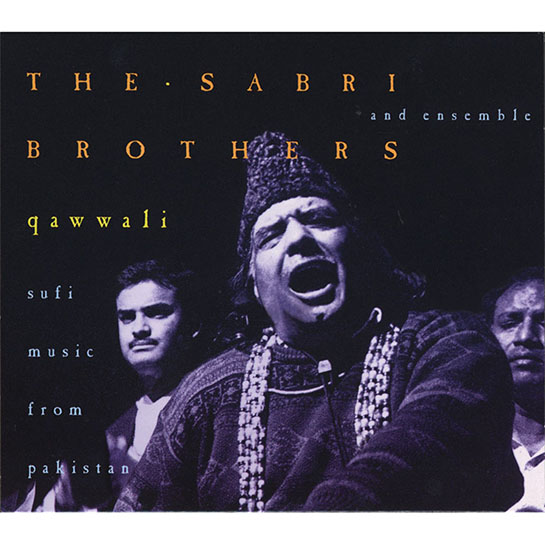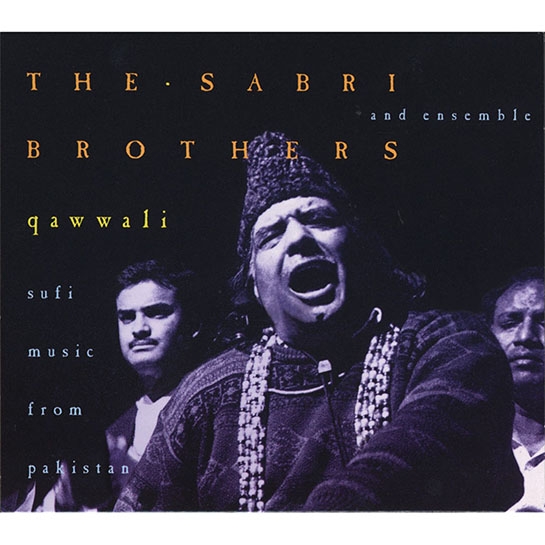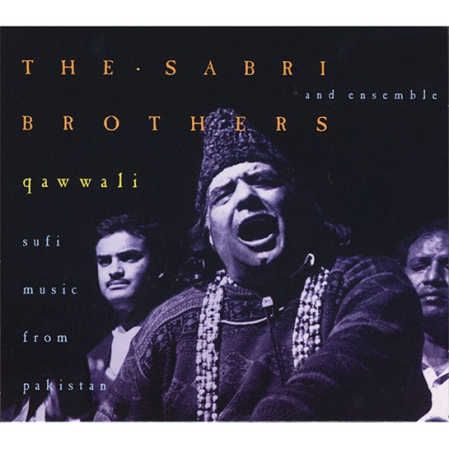Qawwali, produced by David Lewiston, was recorded in the United States in April 1978, while the Sabri Brothers & Ensemble were on their second acclaimed tour of the United States. The New York Times called it “the aural equivalent of dancing dervishes," citing the music's "rhapsodic declaimed verses and full-bodied unison chorus” and further describing it as "music of feeling."
Qawwali, produced by David Lewiston, was recorded in the United States in April 1978, while the original nine-man group was on its second acclaimed tour of the United States. When Qawwali was originally issued, John Rockwell of the New York Times called it “the aural equivalent of dancing dervishes," citing its "rhapsodic declaimed verses and full-bodied unison chorus,” and further describing it as "music of feeling."
Popular film and recording artists in their native country, the Sabri Brothers & Ensemble have toured Europe, Asia, the Middle East, and the United States. Although Ghulam Farid Sabri passed away in 1994, the ensemble, under the leadership of Maqbool Ahmed Sabri, continues to perform throughout the world.
About Qawwali
The qawwal is a singer or singing musician (in Arabic, “one who speaks well”) of the Chishti tradition of India and Pakistan. Qawwali is linked with the history of the Chishti Order, which was founded in Chisht, in Khurasan, and brought to the Indian subcontinent in the 12th century. Qawwali, from the Arabic word qual, meaning utterance, are the songs intended to stimulate religious ecstasy and trance. The qawwal voices the spiritual message of Sufism, a mystical extension of Islam.
Qawwali music has been developed from the inversion of Indian ragas: vocals and harmoniums are layered on top of rhythm. The vocals reach their greatest intensity when some of the singers take turns singing while the others are breathing. This creates the illusion that they are singing without taking a breath. The harmoniums operate in the same way.
Qawwali is the music of the Sufis, and the message is love. The language of love and unrequited love is the ghazal, a popular poetic form. In a society where the sexes are segregated and marriages are arranged with no regard to love, the ghazal has an audience of millions who identify with its meaning.
The most popular exponent of the qawwali tradition, Nusrat Fateh Ali Khan, helped to create an audience for the Sabri Brothers and other qawwals. His work with artists as diverse as Michael Brook, Jeff Buckley, and Pearl Jam brought recognition to the art of qawwali throughout the world.
PRODUCTION CREDITS
Produced and engineered by David Lewiston
Recorded April 1978 in New York
Mastered by Robert c. Ludwig
Coordinator: Teresa Sterne
Art direction and design: John Costa, New Orleans
Cover photos: Roger Granat
72080
MUSICIANS
Ghulam Farid Sabri, voice, harmonium
Maqbool Ahmed Sabri, voice, harmonium
Kamal Sabri, voice
Mahmoodghaznavi, voice
Umer Daraz, voice
Abdul Aziz, voice
Masi Huddin, voice, tanpura
Mohammad Anwar, nal, tabla
Abdul Karim, dholak



